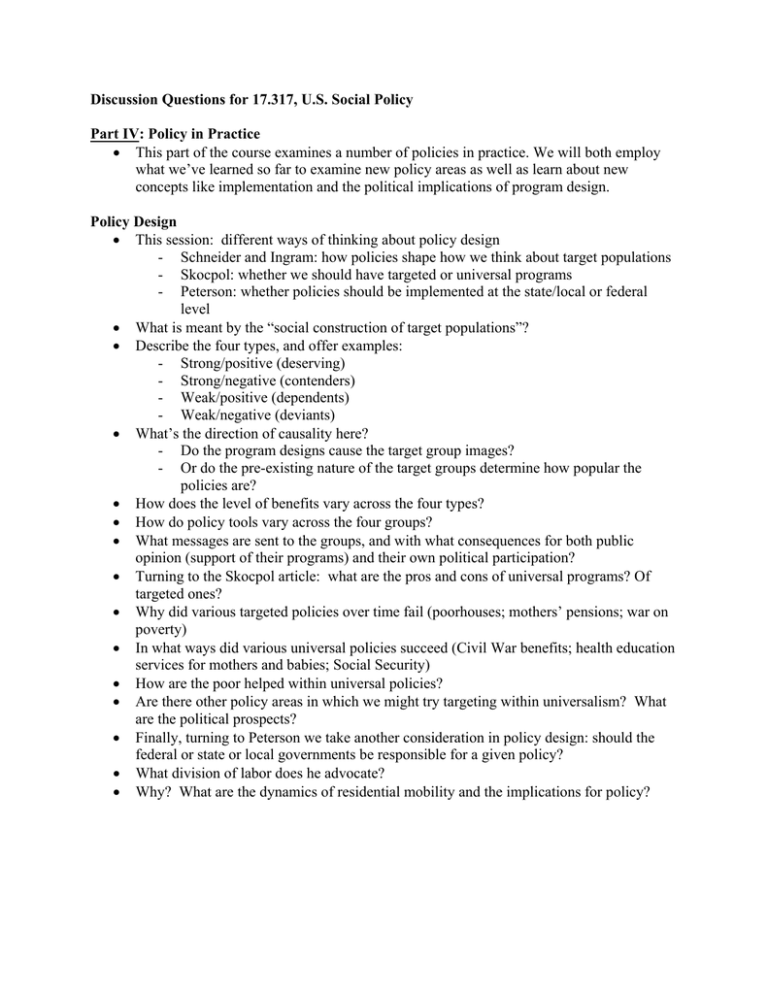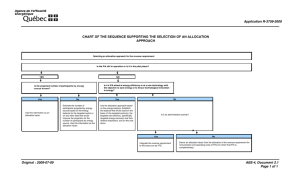Discussion Questions for 17.317, U.S. Social Policy
advertisement

Discussion Questions for 17.317, U.S. Social Policy Part IV: Policy in Practice • This part of the course examines a number of policies in practice. We will both employ what we’ve learned so far to examine new policy areas as well as learn about new concepts like implementation and the political implications of program design. Policy Design • This session: different ways of thinking about policy design - Schneider and Ingram: how policies shape how we think about target populations - Skocpol: whether we should have targeted or universal programs - Peterson: whether policies should be implemented at the state/local or federal level • What is meant by the “social construction of target populations”? • Describe the four types, and offer examples: - Strong/positive (deserving) - Strong/negative (contenders) - Weak/positive (dependents) - Weak/negative (deviants) • What’s the direction of causality here? - Do the program designs cause the target group images? - Or do the pre-existing nature of the target groups determine how popular the policies are? • How does the level of benefits vary across the four types? • How do policy tools vary across the four groups? • What messages are sent to the groups, and with what consequences for both public opinion (support of their programs) and their own political participation? • Turning to the Skocpol article: what are the pros and cons of universal programs? Of targeted ones? • Why did various targeted policies over time fail (poorhouses; mothers’ pensions; war on poverty) • In what ways did various universal policies succeed (Civil War benefits; health education services for mothers and babies; Social Security) • How are the poor helped within universal policies? • Are there other policy areas in which we might try targeting within universalism? What are the political prospects? • Finally, turning to Peterson we take another consideration in policy design: should the federal or state or local governments be responsible for a given policy? • What division of labor does he advocate? • Why? What are the dynamics of residential mobility and the implications for policy?

